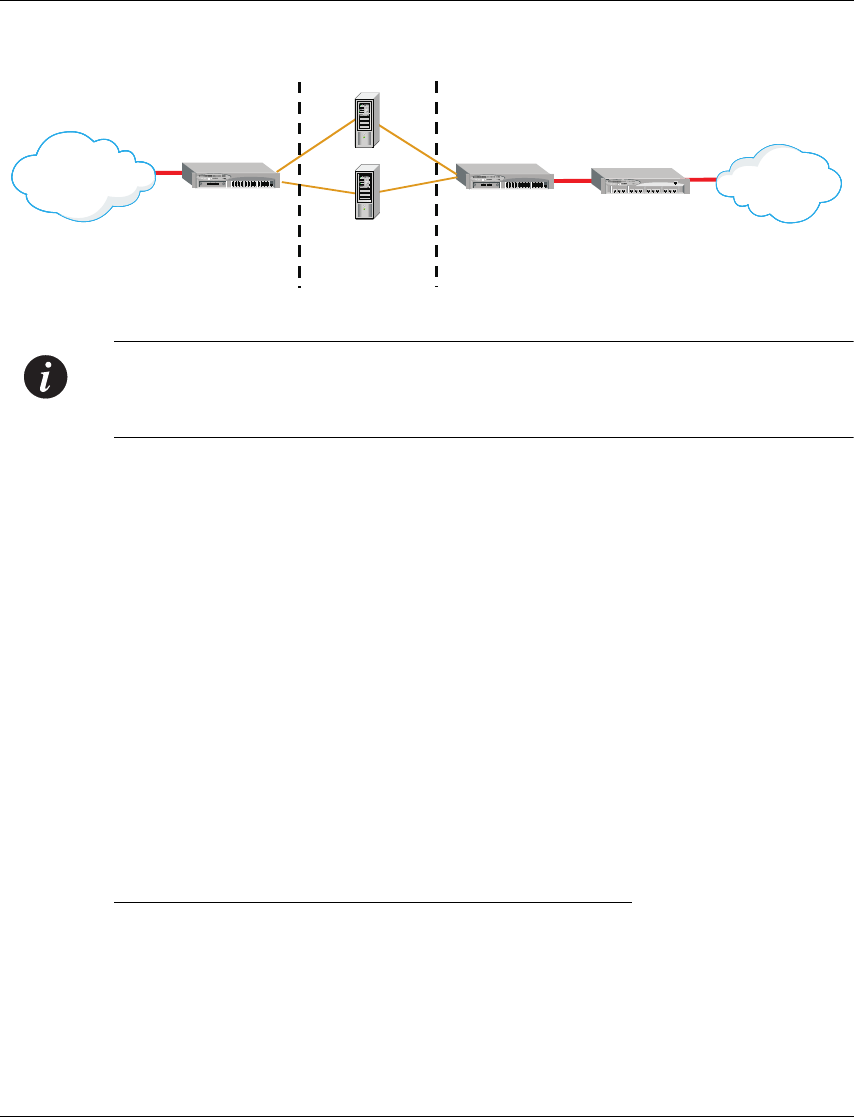
Chapter 14 Load Balancing in the P333R-LB
Avaya P333R-LB User’s Guide 19
Figure 14.6 Non-Transparent Routing FWLB Sample Static NAT Configuration
Note: The P333R-LB performs load balancing on traffic that arrives to its routing
interfaces. Therefore, IP routes in the network must be configured to pass through
the P333R-LB.
To configure your network as in Figure 14.6, the following should be done:
• The LAN routers (or hosts) should be configured with 10.4.1.3 as the next hop
toward the WAN (the default gateway in many cases).
• The access router should be configured with 193.170.1.1 as the next hop toward
the LAN.
• The firewalls should be configured with 10.1.1.3 as the next hop towards the
LAN, and 10.2.1.3 as the next hop toward the WAN.
• The firewalls must be configured to allow ICMP Echo to pass between the two
load balancers (10.1.1.3 and 10.2.1.3) for health-check purposes.
• Configure P333R-LB1 to use the Hash metric, and set the Hash parameter to
"destination".
• Configure P333R-LB2 to use the Hash metric, and set the Hash parameter to
"source".
As both load balancers compute the hash function based on IP addresses of hosts
across the WAN, session persistency is maintained.
Load Balancing Metrics for Non-Transparent Routing FWLB
Non-Transparent Routing FWLB uses the following metrics:
•Hash.
•MinMiss Hash.
Hash is the default metric for FWLB, and the metric parameter is: Source IP,
Destination IP. For full information about Hash and MinMiss Hash, see Load
Balancing Metrics for Transparent Routing FWLB on page 13. For full information
on selecting a load balancing metric, see Selecting a Load Balancing Metric on page
Internet
10.1.1.3
10.2.1.3
10.1.1.1
10.1.1.2
10.2.1.2
10.2.1.1
193.170.1.1
193.170.1.2
10.4.1.3
LAN
Server
Server
Firewall 1
RSG fw-group
P333R-LB 1
P333R-LB 2
Access Router
Firewall 2


















